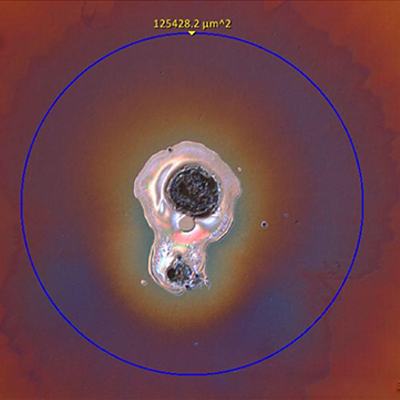
01 Introduction
Imagine trying to capture a photo of a bee with your phone, but just as you press the shutter, the bee flies away, leaving only a blurry trace on the screen. This happens because the camera isn't fast enough to clearly capture the image of the flying bee.
Such limitations have driven the development of ultrafast lasers with pulse durations ranging from femtoseconds to picoseconds. These lasers are not intended to capture bees in flight, but rather even faster events—such as molecular vibrations, electron motion, and quantum phenomena. Operating on timescales from one millionth to one billionth of a second, ultrafast lasers have expanded our understanding of fundamental physical phenomena and revolutionized the industrial sector.
02 Unique Features of Ultrafast Lasers
The ultrashort pulse duration of ultrafast lasers gives these systems distinctive properties, setting them apart from long-pulse or continuous wave (CW) lasers.
To generate ultrashort pulses, a wide spectral bandwidth is required. The pulse shape and central wavelength determine the minimum bandwidth necessary to produce a given pulse duration. This relationship is typically described using the Time-Bandwidth Product (TBP), derived from the uncertainty principle. For a Gaussian pulse, TBP is defined as:

△T is the pulse duration, and △v is the frequency bandwidth.
Fundamentally, this equation shows an inverse relationship between spectral bandwidth and pulse duration—meaning that shorter pulses require broader bandwidths. The figure illustrates the minimum bandwidth required for different pulse durations.
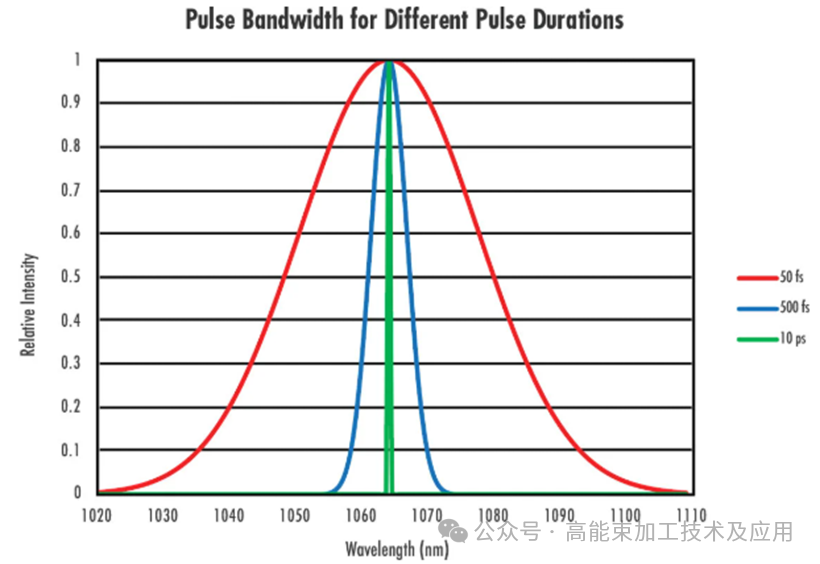
Minimum spectral bandwidth required for 10ps (green), 500fs (blue), and 50fs (red) pulsed lasers.
In addition to broad spectral bandwidth, ultrashort pulse durations also enable extremely high peak powers. Consider a 10W CW laser and a 10W ultrafast laser with a pulse duration of 150fs and a repetition rate of 80MHz. For the CW laser, the average and peak power are both 10W, as the output is continuous.
For the ultrafast laser, although the average power is still 10W, the power is emitted in extremely short bursts. The figure shows the stark contrast between average and peak power.
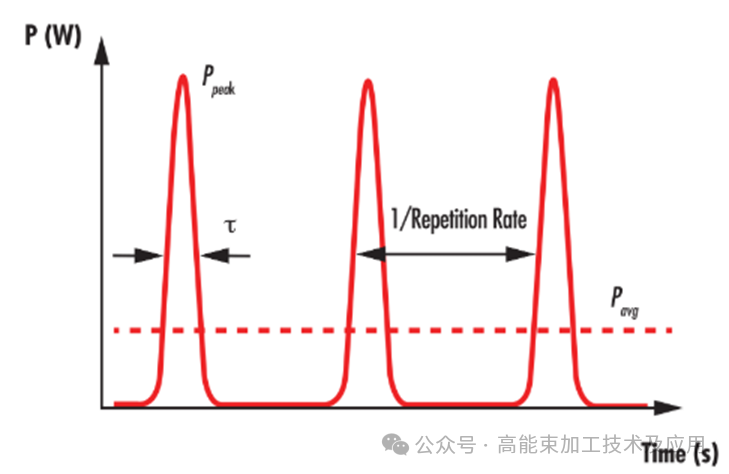
Description of the average power Pavg and peak power Ppeak of a laser with pulse duration t.
For ultrafast lasers, the 10W average power is distributed across 80 million pulses per second. At first glance, the sub-microjoule pulse energy may seem negligible. However, when this energy is compressed into a time window of only 150fs, the resulting peak power can exceed 800,000W—four orders of magnitude greater than the average power.
03 Technical Challenges of Ultrafast Lasers
3.1 Laser Damage Threshold (LDT)
The Laser Damage Threshold (LDT) of ultrafast optical components differs significantly from that of more traditional laser sources and is more difficult to manage, as shown in Figure.For nanosecond pulse lasers, optical components typically have LDTs in the range of 5–10 J/cm². In contrast, ultrafast optics tend to have LDTs below 1 J/cm², often closer to 0.3 J/cm². This variation stems from the laser-induced damage mechanisms that depend on pulse duration.
For nanosecond or longer-pulse lasers, the primary damage mechanism is thermal. Coatings and substrate materials absorb incident photons and heat up, causing deformation of the material lattice. Common thermal damage effects include thermal expansion, cracking, melting, and lattice strain.
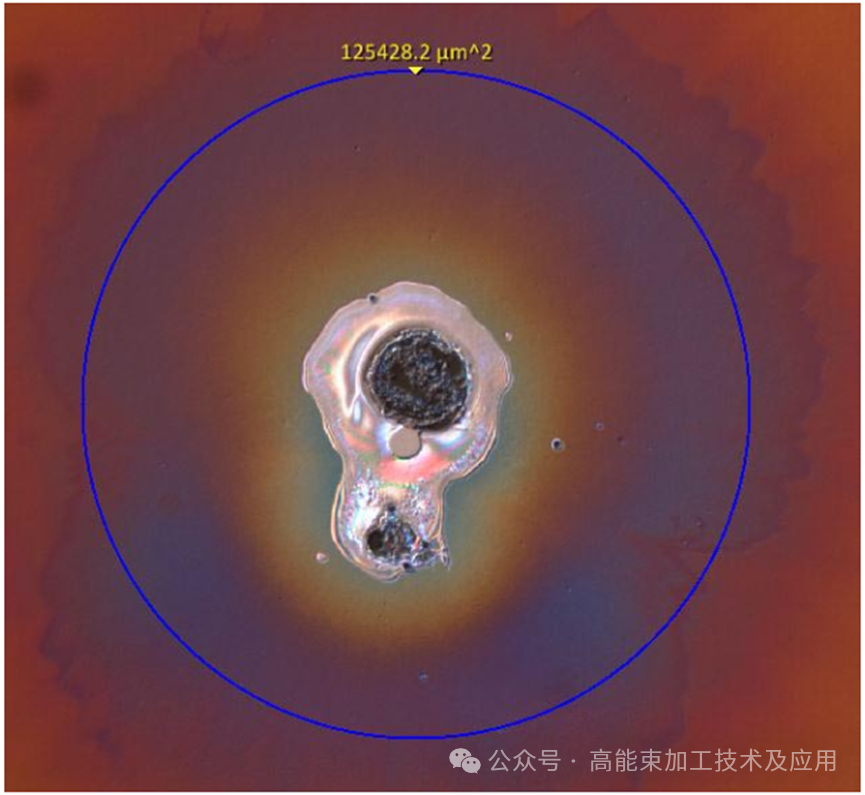
Laser-induced damage to the surface of optical devices can degrade the performance of laser systems, rendering them ineffective or even dangerous. Due to the shorter pulse duration, the damage mechanism of ultrafast lasers is very different from that of long-pulse lasers.
However, for ultrafast lasers, pulse durations are shorter than the timescale for heat transfer into the material lattice, so thermal effects are not the main cause of damage, as shown in Figure. Instead, high peak powers lead to nonlinear damage mechanisms, such as multiphoton absorption and ionization.
This is why LDT values for nanosecond lasers cannot simply be scaled down to ultrashort-pulse levels—the underlying physical mechanisms of damage are entirely different.
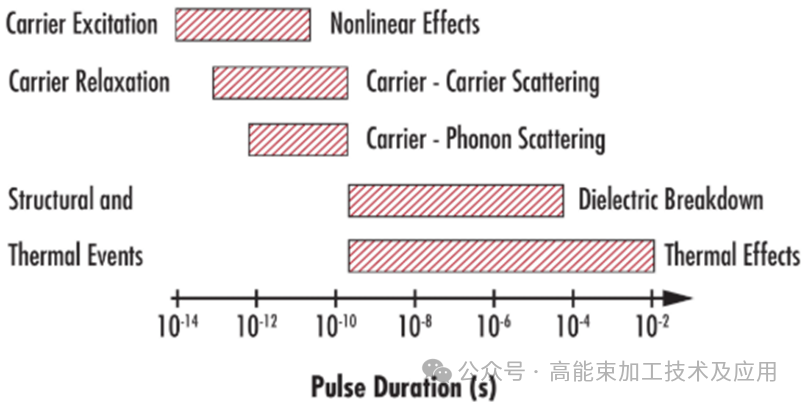
Laser-induced damage mechanisms at different pulse durations
3.2 Dispersion and Pulse Broadening: Group Delay Dispersion
One of the most challenging technical issues in using ultrafast lasers is preserving the original ultrashort pulse duration emitted by the laser. Ultrafast pulses are highly susceptible to temporal distortion and pulse broadening. The shorter the initial pulse, the more vulnerable it is to these effects. Even mirrors, lenses, or air can broaden a 50fs pulse.
This temporal distortion is quantified as Group Delay Dispersion (GDD), also known as second-order dispersion. Though higher-order dispersion can also affect ultrashort pulse dynamics, GDD is often the primary concern.
GDD is frequency-dependent and linearly related to material thickness. Transmissive optical elements (e.g., lenses, objectives) typically introduce positive GDD, meaning compressed pulses will exit these optics with longer durations than when emitted from the laser.
Low-frequency (longer wavelength) components travel faster than high-frequency (shorter wavelength) components. As pulses traverse more material, the wavelengths stretch over time. The effect is more severe for shorter, broadband pulses, potentially leading to significant temporal distortion.
For nanosecond or even picosecond pulses, GDD is not a major concern. However, for femtosecond pulses, even 10mm of N-BK7 material can broaden a 50fs pulse at 800nm by over 12%—roughly equivalent to adding two optical filters in the beam path.
The impact of GDD depends on factors such as pulse duration, central frequency, and the materials the pulse travels through. The temporal broadening caused by GDD is described by:

This equation shows that for the same GDD value, shorter pulses undergo greater broadening than longer ones. That’s why GDD is rarely discussed for nanosecond or picosecond pulses.
For example, it would take 20,000fs of GDD to broaden a 1ps pulse by only 0.2%.
**--Cite the article published by 高能束加工技术 on May 8, 2025, in the WeChat public account "High-Energy Beam Processing Technology and Applications."























